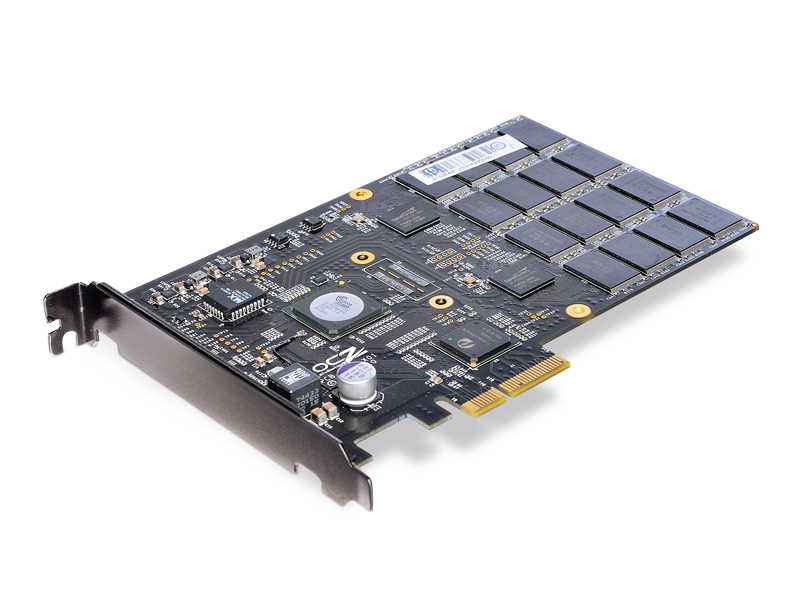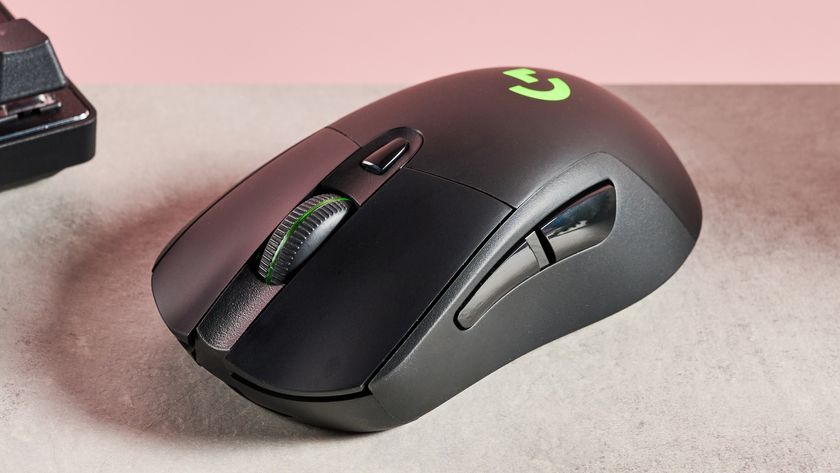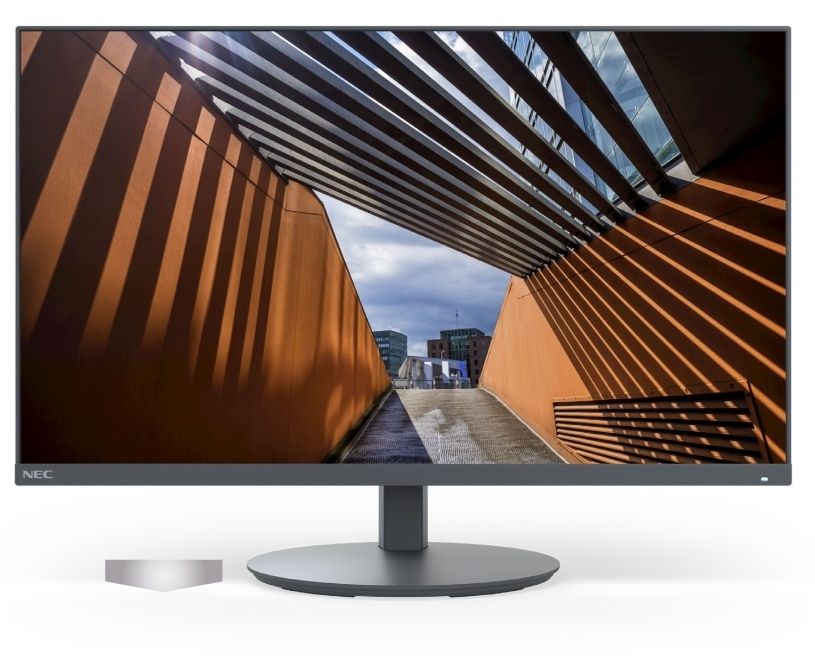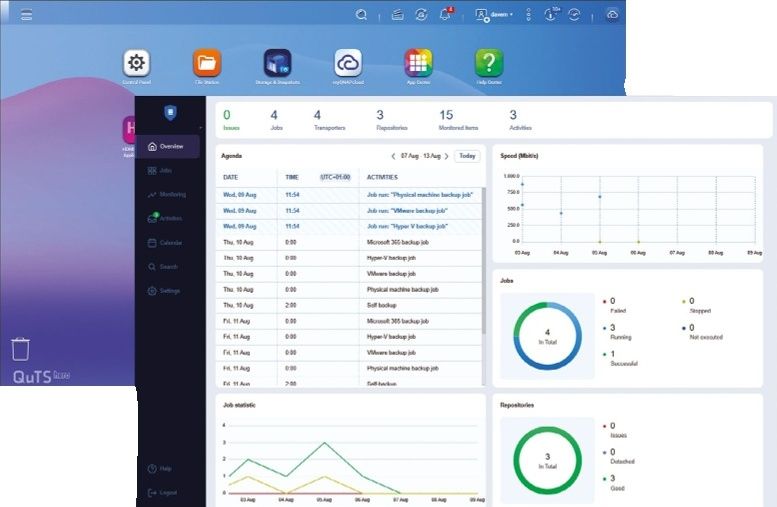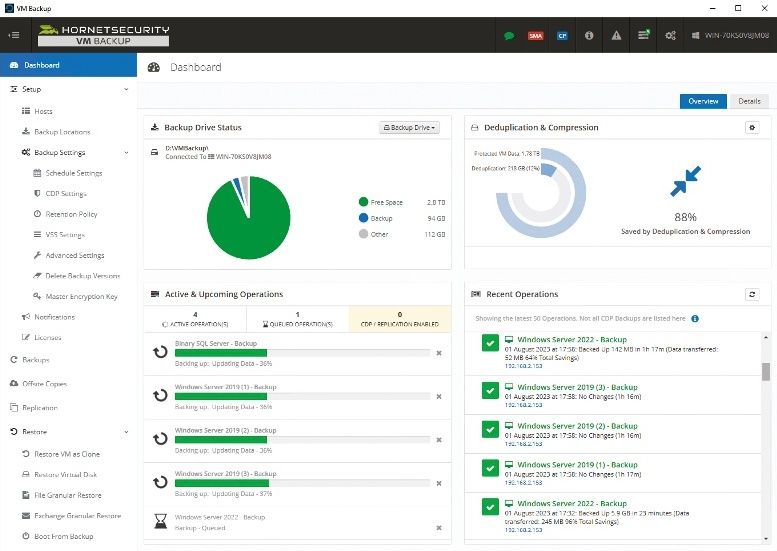TechRadar Verdict
Pros
- +
Very, very quick
- +
Gets around the current SATA limitations
- +
Not as expensive as you might expect
Cons
- -
Performance not entirely consistent
Why you can trust TechRadar
Ever the SSD innovator, OCZ's PCIe-based RevoDrive is a bit of corker. While the SATA 3Gbps and SATA 6Gbps interfaces are still along way off causing major bandwidth problems for mechanical hard drives, the same cannot be said for SSDs.
And for manufacturers wanting to bring out faster performing drives both now and in the not too distant future, these interfaces are increasingly causing storage bottleneck problems.
What's needed is a completely fresh way of looking at how you get data on and off the drive and, for that matter, what you perceive as a storage drive anyway. One of the leading manufacturers in this quest to use something other than the standard I/O interfaces is OCZ.
The RevoDrive 120GB, is a storage drive that uses the motherboard's PCIe bus to overcome the performance issues with the SATA I/O interface. Basically the way to think of it is as two 60GB OCZ Vertex 2E drives with the external cases removed and the memory chips placed on a PCB which has a PCI-E x4 interface (but don't worry if your board doesn't have one, it'll fit into a spare x16 PCI-E slot) together with a couple of SandForce controllers and a RAID controller.
This 120GB version sits towards the bottom end of a range that runs from 50GB to 480GB capacities.
Build quality
Built on a pretty compact PCB, (125 x 181 x 21.6mm) the RevoDrive 120 uses 32 4GB, 34nm Intel/Micron MLC (Multi-Level Cell) modules to achieve its capacity. With them being arranged 16 per side of the card.
Each 64GB memory partition is controlled by an 8-channel SandForce SF-1222TA3 SBH controller and the data flow is controlled by an on-board SATA 3Gbps RAID controller. This uses a pre-built RAID 0 (Stripe) array.
You might be wondering about the holes drilled into the PCB, these are the fixing points for the daughter cards that are used to support the memory chips for the larger capacity cards.
Unlike other manufacturers drives using the SF-1200 and related firmware, OCZ's close relationship with SandForce has enabled it to pair the controllers with the latest SF-1500 firmware, which gives better random write speeds.
The card has an x4 PCI-E 2.0 slot, potentially giving a huge 2GB/s of bandwidth (500MB/s per lane). The interface actually runs at PCI-E x1.1 which gives half the bandwith at 1GB/s, with a bridge chip connecting the two together.
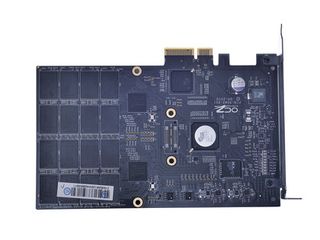
Even this is far in excess of the 550MB/s of bandwidth that is supported by a pair of SATA cables and the reason why OCZ claims maximum read/write speeds for the RevoDrive 120 of 540MB/s and 480MB/s respectively.
However not everything in the garden is rosy. While the SandForce controllers support the Windows 7 TRIM command, the SIS RAID controller doesn't, and actually blocks it, so instead algorithms programmed into each of the controllers sort out the garbage. What does that mean in English?
Well it simply means that the RevoDrive has the potential to really suffer from a downward spiral of performance coinciding with its long term use.
Likes em big
As for performance, well somehow fast doesn't quite do it justice. OCZ claims maximum sequential read and write performance of up 540MB/s and 480MB/s respectively, which was more or less confirmed in our own testing.
Using the ATTO benchmark, it returned figures of 528MB/s read and 490MB/s write, while in the HD Tach burst speed test it turned a figure of 491MB/s.
To give an idea of how much faster in these tests than a standard 120GB SSD we put it up against a Kingston 100V+ 128GB, which gave a HD Tach burst speed figure of 248MB/s and ATTO read/write figures of 234MB/s and 198MB/s. A Corsair Nova V128 offered up 195MB/s from the HD Tach benchmark and 247MB/s and 238MB/s from ATTO.
The more demanding AS SSD benchmark though returned more modest figures for the RevoDrive of 384MB/s and 134MB/s respectively. However the 4K random read/write results from the AS SSD benchmark showed the drive in a different light with figures of 24.93MB/s and 82.51MB/s respectively - not that much better than either of the standard interfaced drives.
So it's more adapt at shunting around those big files rather than dealing with the everyday tasks of moving small bitty files. This was shown up by its dealing with our 1GB zip file test. The test file is made up of loads of little files and the RevoDrive struggled to put daylight between itself and the two standard drives.
It finished the extraction in 38 seconds compared to the 42 seconds for the Corsair drive and 46 seconds for the Kingston. You may be wondering why, if the RevoDrive uses 32 4GB memory chips it has only a 120GB capacity and not 128GB (32 x 4 = 128 surely). Well that's down to something called 'over provisioning'.
Over provisioning is one method of maintaining an SSD's performance by dedicating a chunk of memory for use as empty blocks for jobs such as address mapping, writing and the removal of dead blocks without reducing the drives capacity or performance and increasing the life of the drive.
How much space is provided for this purpose is controlled by the SandForce firmware and in the case of the RevoDrive 120, two NAND chips (8MB) are used for the job. After the standard formatting, address table formation etc, the capacity ends up at a usable 119.14GB.
Another thing to note - if you want to use the RevoDrive as a boot drive then you'll need to download the drivers from the OCZ web site and drop them on a USB key or CD to use during the Windows installation, otherwise it won't be recognised.
Forty seconds
OCZ's RevoDrive then is an interesting way of getting around the current limitations of the SATA interface by using the PCIe bus, and we can only imagine what the performance would be like if drives like this could access the full bandwidth of the PCI-E 2.0 specification.
As it is it's a stonkingly fast, but by no means perfectly, performing drive. Still, we were pretty much blown away seeing a functional version of Windows 7 sat on screen around forty seconds after hitting the power button.
While it may be more expensive than either a single 120GB Vertex 2 drive or even a pair of 64GB ones, its somehow not quite as expensive as you might think given the technology it uses on that PCB. For the price then you get a mighty fast drive that wont clog up any SATA ports.
Follow TechRadar Reviews on Twitter: http://twitter.com/techradarreview
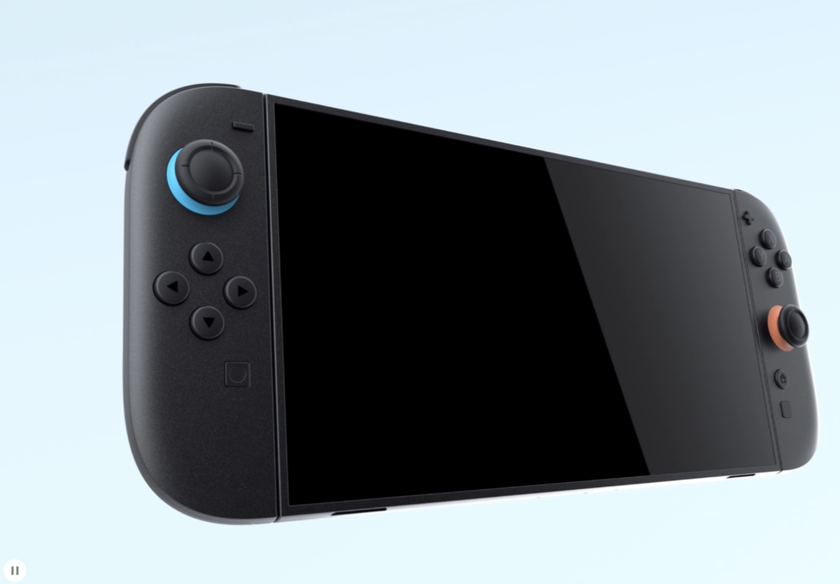
Nintendo Switch 2 specs revealed, and yes, it will support 4K resolution - as well as a host of other upgrades over the original

We finally know about the C button on the Nintendo Switch 2 – here’s what it does

Hulu and Paramount+ order a new Dexter prequel and Handmaid's Tale sequel, giving fans more killer thrills and dystopian chills
